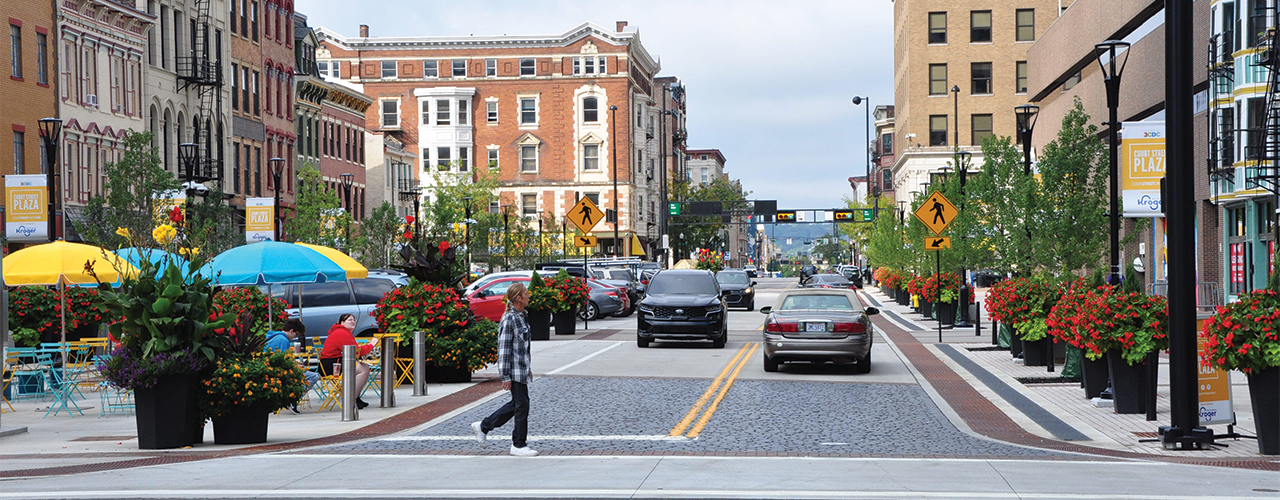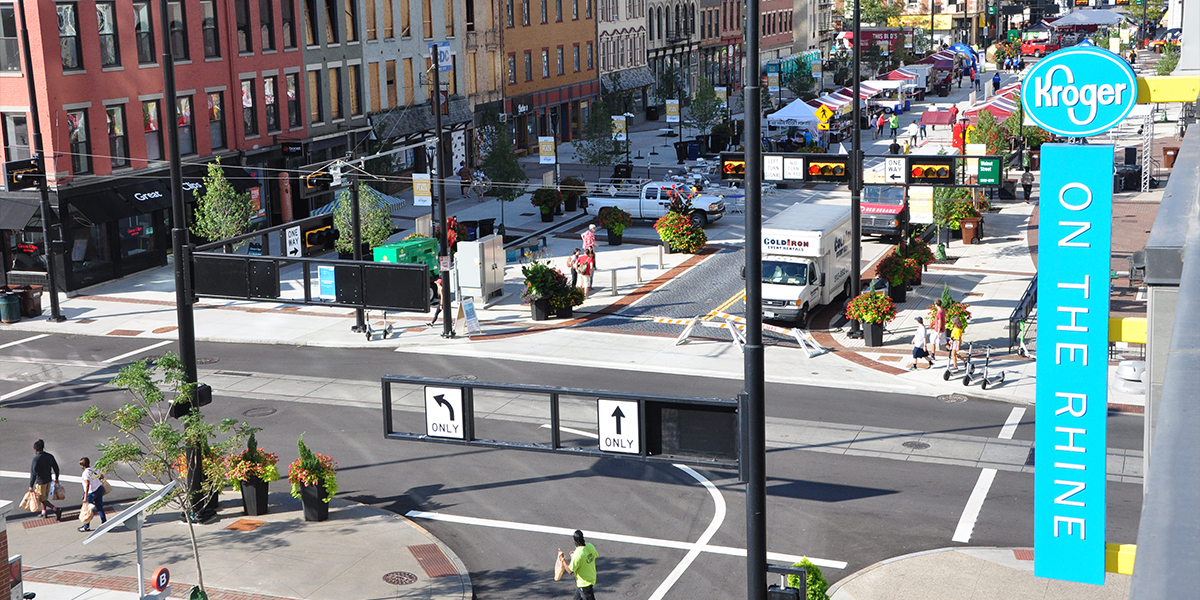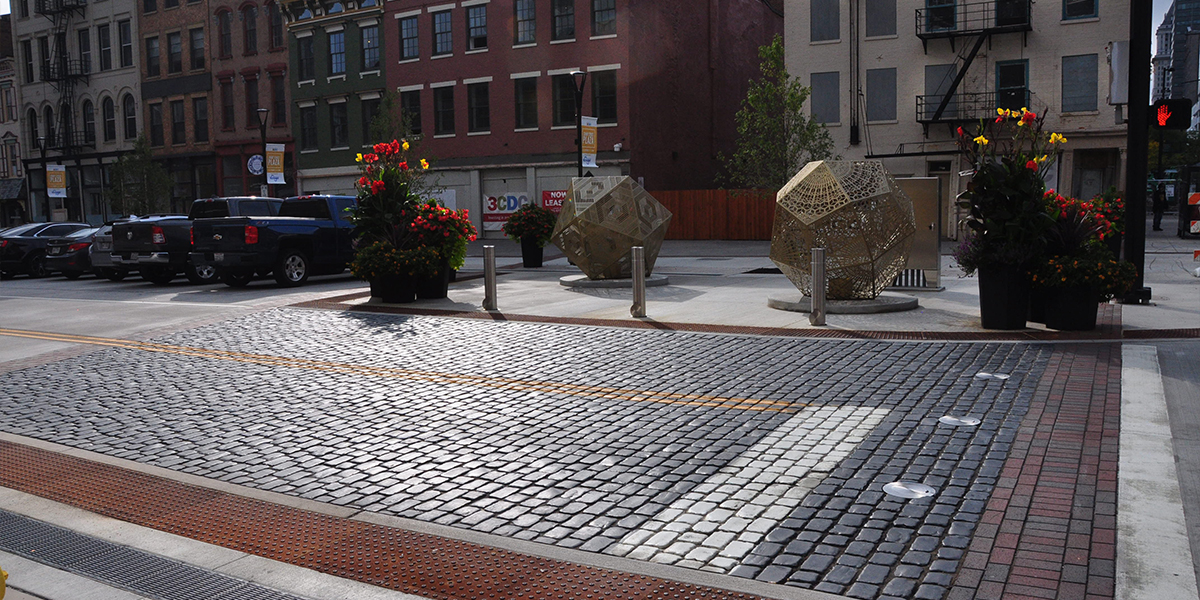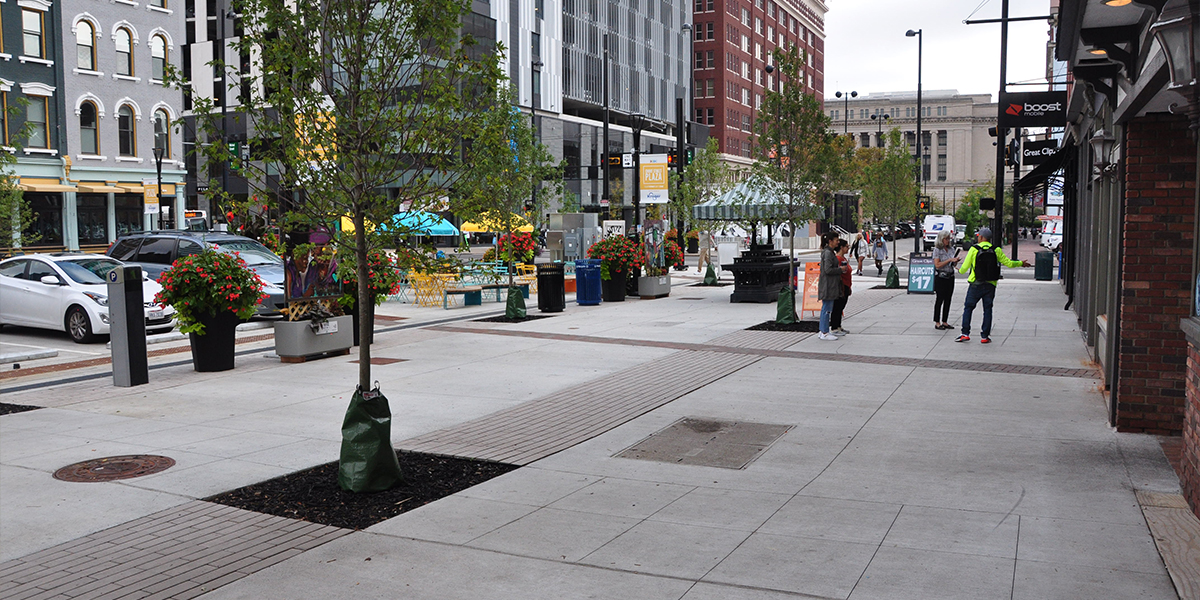Court Street Renovation

Background
The city of Cincinnati is attempting to improve pedestrian safety and accessibility across all its streets, with a special focus on making downtown streets more livable. At the same time, the Cincinnati City Center Development Corporation (3CDC) wished to further develop the streetscape area immediately in front of and adjacent to the current Court Street Condominiums project. This project was meant to provide a street that is pedestrian friendly and that can be converted into a plaza. 3CDC also wanted to use Court Street to connect the Over-the-Rhine neighborhood to the rest of downtown Cincinnati.
Challenge
The project’s focus was to create an environment that gives pedestrians priority and can be used for multiple functions, including traffic and parking by day and festivals and concerts at night, on weekends and during special events.
Court Street between Vine and Walnut served as a parking lot as much as city street, with a mix of store fronts and residential uses. The push to revitalize this block coincided with a strong desire to repurpose city streets for pedestrian circulation and city life as a festival street. The improvements needed to be integrated into a new pocket park/accessway to an adjacent parking area, already under design as part of a separate project by the Woolpert design team. Additionally, the project needed to complement area renovations to a number of buildings on the block by 3CDC.
Solution
By removing curbs and signs, Woolpert’s schematic design for a flexible festival space proves easily convertible between street and entertainment. Woolpert prepared construction documents for the fully developed the hardscape and landscape plan along with features such as special paving, lighting, furniture, seat walls and entry features.
The project widened the sidewalks on both sides of the street for outdoor restaurant seating, removed a median and revised on-street parking. This project is unique because it incorporates multiple different pavement types and a street without curbs, both of which enable easy conversion of the area to a plaza. The different pavement types create a visually pleasing street and outline where cars are meant to drive, making up for the lack of curbs.
Throughout the project, Woolpert worked with both the client and the city because the streets and sidewalks are all owned by the city. Woolpert found project solutions that satisfied the planners and engineers from both groups.
Outcome
Woolpert produced construction documents for a programmable, flexible, and pedestrian-oriented space. The landscaped area employs flexible lighting and sustainable stormwater drainage. The street has electrical service for bands, food vendors and other power needs when the area is acting as a plaza. While being flexible for use, the area still meets street requirements, is drivable, uses traffic controls for safety and is well lit.
Benefits
As a result of this project, Court Street has multiple uses, both as a roadway and a festival street. This project enhances the nearby condominium properties and eliminates the area’s entertainment desert.
Client Quote
“None of us know to what extent the virtual workplace will endure beyond the pandemic, so it makes that pedestrian experience, outdoor dining opportunities that comes with a broader sidewalk…all the more important.”
Cincinnati Mayor John Cranley
Client
Cincinnati Center City Development Corporation
Location
Cincinnati, OH
Services
- Surveying
- Civil engineering
- Traffic engineering
- Landscape architecture
- Urban design
- Lighting design


